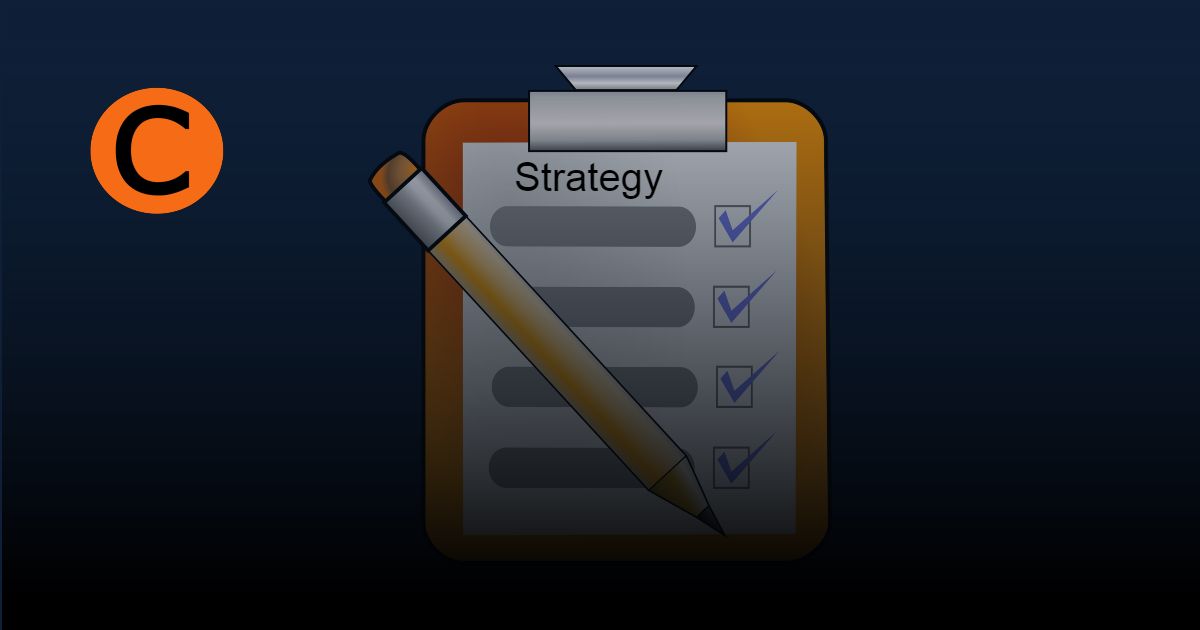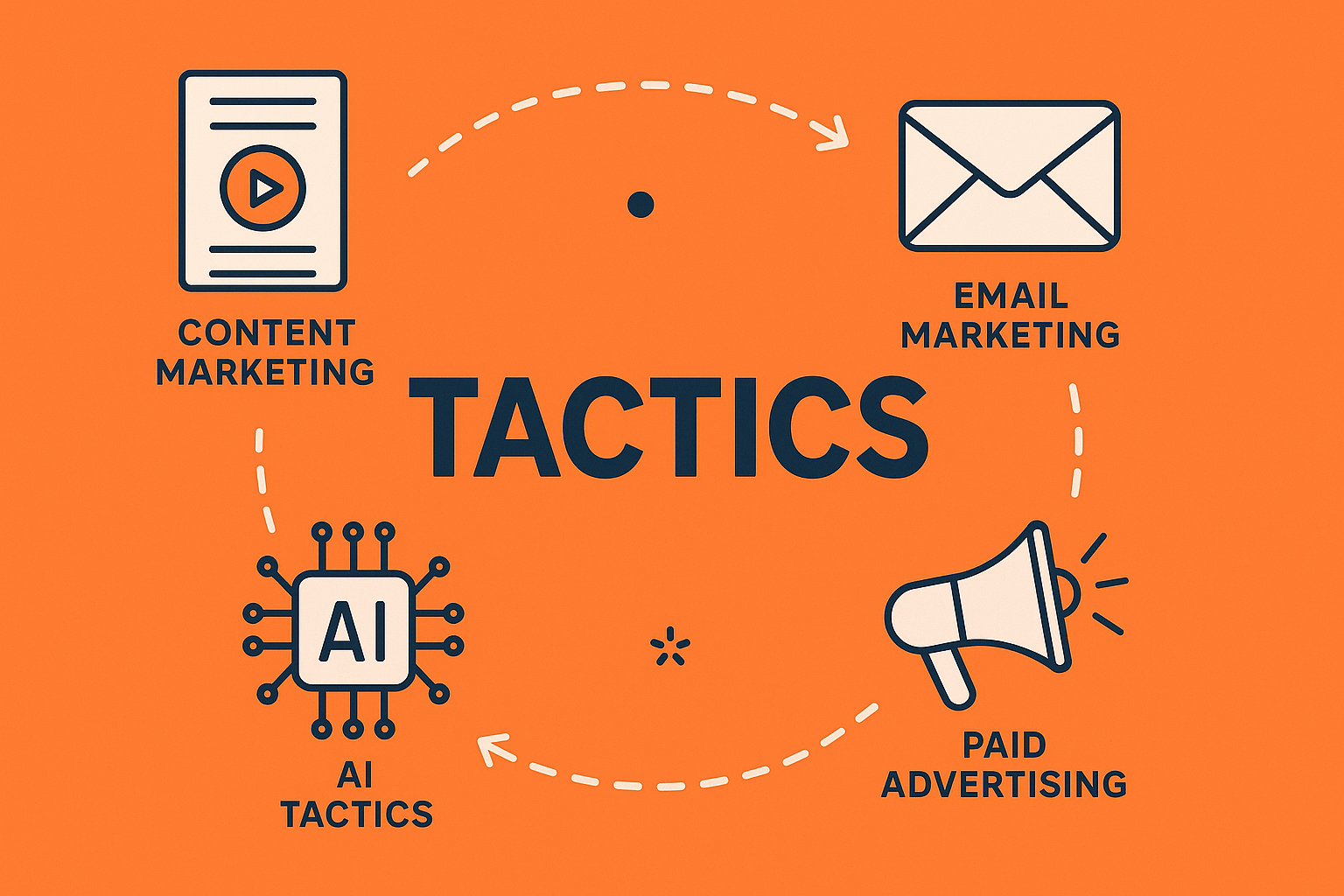Unless you have been living in a cave for the last few years, you’ll have noticed that the digital...
Build It (Better) And They Will Come - A Digital Marketing Strategy Checklist

In the fast-changing world of digital marketing, staying ahead of the curve or just keeping up, can feel overwhelming. But fear not, fellow marketing warrior! This strategy checklist equips you with the essential steps to change it up and plan a robust digital marketing strategy that will keep your results on track.
Phase 1: Laying the Foundation
Define Your "Why"
Before diving headfirst into tactics, establish your overarching goals. What do you aim to achieve? Increase brand awareness? Drive sales? Generate leads?
Craft specific, measurable, achievable, relevant, and time-bound (SMART) goals to guide your strategy.
Know Your Audience
Who are you trying to reach? Develop detailed buyer personas or ideal client profiles (ICP) that capture your ideal customer's demographics, needs, and online behaviour. Understanding their pain points and preferences allows you to tailor your messaging and choose the most effective channels.
Competitive Analysis
Research your competitors to identify their strengths and weaknesses in the digital landscape. Analyse their websites, social media presence, and content strategy.
This intel helps you differentiate your brand and exploit potential gaps in their approach.
Phase 2: Choosing Your Weapons
Owned Media
This refers to the digital channels you fully control, like your website, blog, and social media profiles. Make sure your content is aligned to solving the issues that you ICP faces.
Website Audit
Conduct a thorough audit or digital marketing review to assess your website's user experience, search engine optimisation (SEO), and mobile friendliness. Prioritise making your website the best possible digital resource for your audience.
Content is (Still) King
Create high-quality, unique, and engaging content that resonates with your target audience. This could be blog posts, infographics, videos, or even interactive elements. Optimise your content for SEO by making it easy to read and relevant to the type of questions that users are looking to get answered.
Look to build in Expertise, Authority and Trust with in depth well researched articles, cite sources and provide author credentials.
Embrace Social Media
Choose the platforms most frequented by your target audience and establish a strong presence. Develop engaging social media campaigns, consistently share valuable content, and actively engage with your followers. Be social, ask questions and develop conversations.
Paid Media
Consider paid advertising platforms within your strategy to achieve specific campaign goals. Google Ads, social media advertising, and display advertising to reach new and wider audiences.
Campaign Planning
Define your campaign objectives, budget, and target audience. Research various ad formats and choose the ones best suited to your goals. Develop compelling advertising copy and visuals that grab attention and drive conversions.
Tracking & Analysis
Regularly monitor your paid advertising campaigns and analyse their performance. This helps you optimise campaigns, adjust strategies, and maximize your return on investment (ROI).
Earned Media
This involves generating a positive buzz about your brand through public relations, influencer marketing, and online reviews.
Craft Compelling Press Releases
Develop newsworthy stories about your brand and share them with relevant media outlets. Build relationships with journalists and bloggers in your industry.
Partner with Influencers
Identify and collaborate with influencers whose audience aligns with your target market. Leverage their reach and credibility to promote your brand authentically.
Encourage Positive Reviews
Encourage satisfied customers to leave positive reviews on trusted websites and social media platforms. Positive reviews build trust and credibility for your brand while influencing potential customers.
Phase 3: Measuring Success and Adapting
Embrace Analytics
Utilise analytics tools to track the performance of your website, social media, email marketing, and paid advertising campaigns. Analyse key metrics such as website traffic, social media engagement, conversion rates, and ROI.
A/B Testing
Implement A/B testing on key aspects of your digital marketing strategy, such as website landing pages, email subject lines, and ad copy. This allows you to compare different approaches and identify the ones that resonate best with your audience.
Embrace Experimentation and Agility
The digital landscape is constantly evolving. Be prepared to adapt your strategy based on data insights and industry trends. Stay informed about emerging technologies and explore innovative tactics to reach your audience effectively.
Usability Testing
Get insights from real people using your website. There are tools such as HotJar but consider moderated testing where you can gain insights from the user experience in real time.
This is just a checklist but hopefully a useful one with some reminders of what you can add to your strategy and evolve your digital marketing for your business.
Need help with your digital marketing strategy?
View our services | View video courses
Get in touch today!
If you have a question or want to find out more about how we can help, then I would love to hear from you.
Stephen Caple
Director
Caple Consulting Limited





